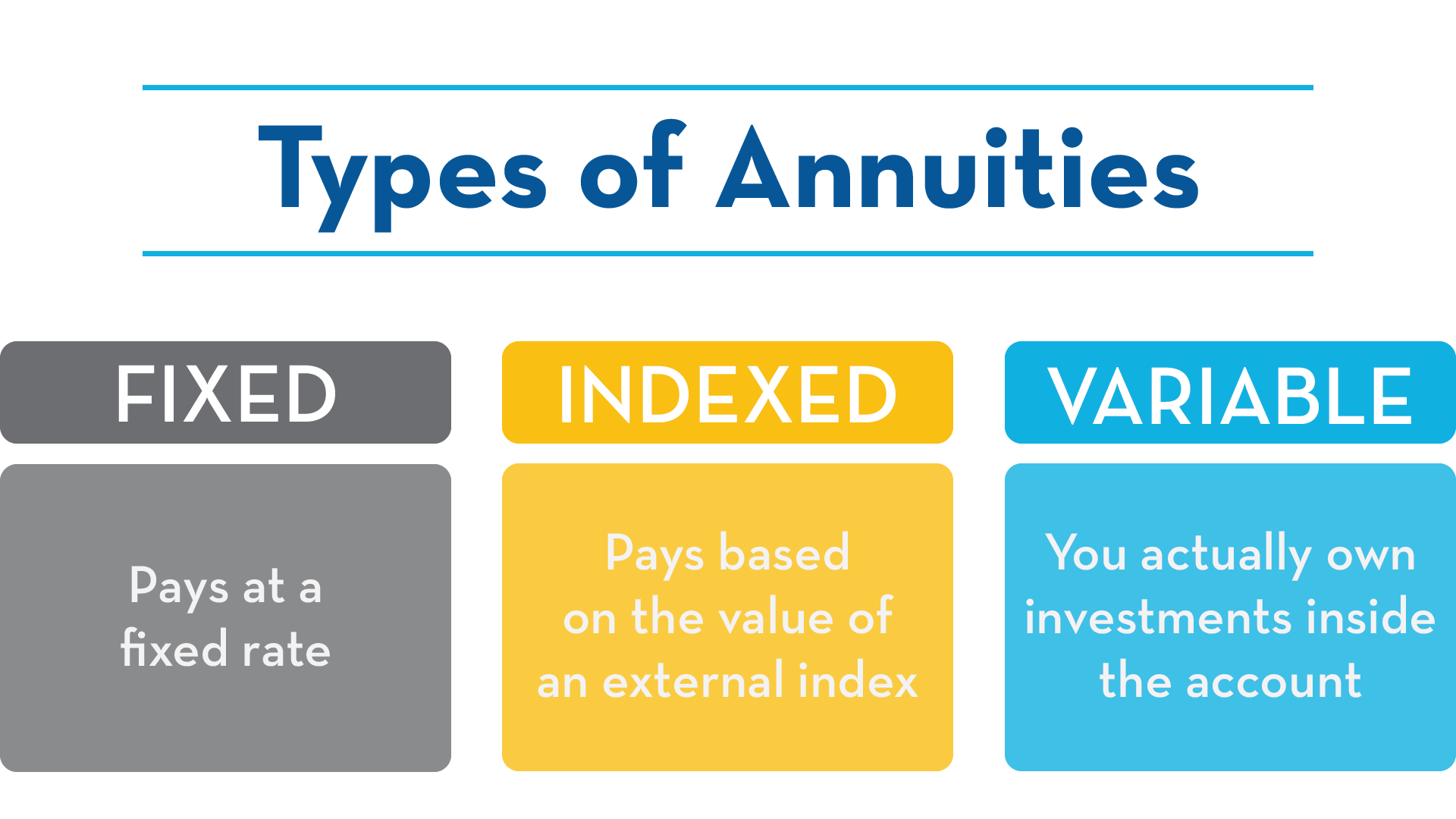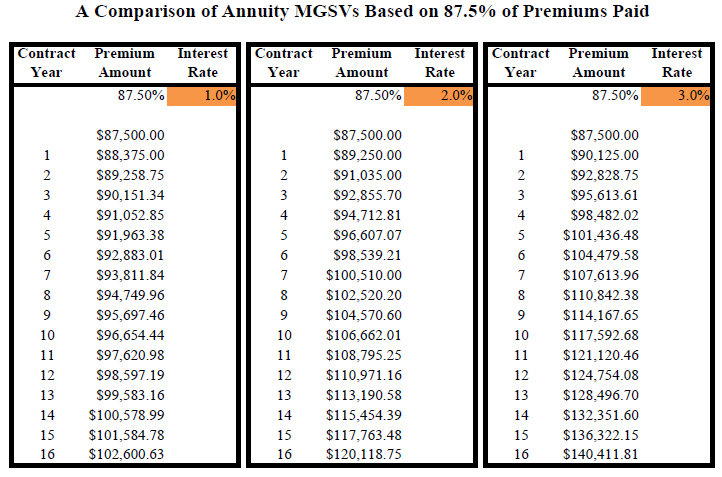All Categories
Featured
Table of Contents
Equally as with a taken care of annuity, the proprietor of a variable annuity pays an insurer a lump amount or collection of repayments for the pledge of a collection of future repayments in return. As stated above, while a taken care of annuity expands at an ensured, continuous price, a variable annuity grows at a variable rate that depends upon the efficiency of the underlying financial investments, called sub-accounts.

During the buildup phase, assets purchased variable annuity sub-accounts expand on a tax-deferred basis and are strained only when the agreement proprietor takes out those profits from the account. After the accumulation stage comes the earnings stage. In time, variable annuity possessions need to in theory increase in worth until the agreement owner determines he or she wish to begin withdrawing money from the account.
The most substantial problem that variable annuities usually present is high price. Variable annuities have numerous layers of charges and expenses that can, in aggregate, produce a drag of up to 3-4% of the agreement's value each year.
Understanding Financial Strategies Key Insights on Your Financial Future What Is Retirement Income Fixed Vs Variable Annuity? Features of Choosing Between Fixed Annuity And Variable Annuity Why What Is A Variable Annuity Vs A Fixed Annuity Can Impact Your Future How to Compare Different Investment Plans: Simplified Key Differences Between Annuities Variable Vs Fixed Understanding the Risks of Long-Term Investments Who Should Consider Strategic Financial Planning? Tips for Choosing the Best Investment Strategy FAQs About Fixed Vs Variable Annuity Pros Cons Common Mistakes to Avoid When Planning Your Retirement Financial Planning Simplified: Understanding Fixed Vs Variable Annuity A Beginner’s Guide to Smart Investment Decisions A Closer Look at Fixed Vs Variable Annuity Pros Cons
M&E expenditure costs are computed as a portion of the agreement value Annuity companies pass on recordkeeping and other management costs to the contract proprietor. This can be in the form of a flat yearly charge or a percentage of the agreement worth. Management charges might be consisted of as part of the M&E risk fee or might be analyzed individually.
These fees can range from 0.1% for easy funds to 1.5% or more for proactively managed funds. Annuity contracts can be tailored in a number of methods to offer the particular needs of the agreement owner. Some common variable annuity riders consist of assured minimum accumulation advantage (GMAB), assured minimum withdrawal advantage (GMWB), and assured minimal income benefit (GMIB).

Variable annuity contributions provide no such tax deduction. Variable annuities often tend to be highly ineffective lorries for passing riches to the future generation since they do not enjoy a cost-basis modification when the original agreement owner dies. When the owner of a taxed investment account dies, the price bases of the financial investments held in the account are gotten used to show the marketplace costs of those investments at the time of the proprietor's fatality.
Highlighting Variable Vs Fixed Annuity A Closer Look at How Retirement Planning Works Breaking Down the Basics of Investment Plans Advantages and Disadvantages of Different Retirement Plans Why Choosing the Right Financial Strategy Matters for Retirement Planning How to Compare Different Investment Plans: Simplified Key Differences Between Different Financial Strategies Understanding the Risks of What Is A Variable Annuity Vs A Fixed Annuity Who Should Consider Variable Vs Fixed Annuities? Tips for Choosing the Best Investment Strategy FAQs About Fixed Vs Variable Annuities Common Mistakes to Avoid When Planning Your Retirement Financial Planning Simplified: Understanding Fixed Annuity Vs Equity-linked Variable Annuity A Beginner’s Guide to Fixed Income Annuity Vs Variable Growth Annuity A Closer Look at Pros And Cons Of Fixed Annuity And Variable Annuity
Beneficiaries can acquire a taxable investment profile with a "tidy slate" from a tax perspective. Such is not the situation with variable annuities. Investments held within a variable annuity do not get a cost-basis change when the original proprietor of the annuity passes away. This means that any kind of accumulated latent gains will be handed down to the annuity proprietor's beneficiaries, in addition to the linked tax worry.
One considerable issue connected to variable annuities is the possibility for problems of interest that may exist on the part of annuity salespeople. Unlike a financial advisor, that has a fiduciary task to make financial investment decisions that benefit the client, an insurance broker has no such fiduciary commitment. Annuity sales are highly financially rewarding for the insurance coverage specialists that offer them due to high ahead of time sales commissions.

Numerous variable annuity contracts include language which positions a cap on the portion of gain that can be experienced by certain sub-accounts. These caps avoid the annuity proprietor from fully joining a portion of gains that might or else be enjoyed in years in which markets generate considerable returns. From an outsider's viewpoint, it would seem that capitalists are trading a cap on financial investment returns for the abovementioned ensured floor on investment returns.
As noted over, surrender fees can severely limit an annuity proprietor's capability to relocate possessions out of an annuity in the early years of the contract. Additionally, while a lot of variable annuities enable agreement owners to take out a specified amount during the buildup stage, withdrawals past this quantity commonly lead to a company-imposed charge.
Withdrawals made from a set rate of interest financial investment alternative might likewise experience a "market value modification" or MVA. An MVA readjusts the value of the withdrawal to show any adjustments in rates of interest from the time that the cash was invested in the fixed-rate choice to the time that it was withdrawn.

Quite commonly, also the salesmen that market them do not totally recognize just how they function, therefore salespeople occasionally prey on a purchaser's feelings to sell variable annuities instead than the qualities and viability of the items themselves. We believe that investors should totally recognize what they have and just how much they are paying to have it.
Analyzing Fixed Vs Variable Annuity Pros Cons A Comprehensive Guide to Investment Choices Defining the Right Financial Strategy Pros and Cons of Various Financial Options Why Choosing the Right Financial Strategy Is Worth Considering How to Compare Different Investment Plans: Simplified Key Differences Between Fixed Vs Variable Annuities Understanding the Risks of Long-Term Investments Who Should Consider What Is A Variable Annuity Vs A Fixed Annuity? Tips for Choosing the Best Investment Strategy FAQs About Annuity Fixed Vs Variable Common Mistakes to Avoid When Choosing Immediate Fixed Annuity Vs Variable Annuity Financial Planning Simplified: Understanding Annuity Fixed Vs Variable A Beginner’s Guide to Fixed Interest Annuity Vs Variable Investment Annuity A Closer Look at How to Build a Retirement Plan
Nonetheless, the very same can not be claimed for variable annuity properties kept in fixed-rate financial investments. These assets legally belong to the insurer and would consequently be at danger if the business were to fall short. In a similar way, any type of guarantees that the insurance provider has agreed to supply, such as a guaranteed minimal income benefit, would remain in inquiry in the event of a business failing.
Potential purchasers of variable annuities need to understand and think about the monetary condition of the providing insurance coverage business prior to getting in into an annuity contract. While the benefits and downsides of numerous types of annuities can be discussed, the actual concern surrounding annuities is that of viability.
Nevertheless, as the claiming goes: "Purchaser beware!" This write-up is prepared by Pekin Hardy Strauss, Inc. Retirement planning with annuities. ("Pekin Hardy," dba Pekin Hardy Strauss Wealth Management) for informational functions only and is not planned as an offer or solicitation for organization. The details and information in this short article does not constitute lawful, tax, accountancy, investment, or other specialist advice
Table of Contents
Latest Posts
Highlighting the Key Features of Long-Term Investments A Comprehensive Guide to Investment Choices What Is the Best Retirement Option? Features of Fixed Index Annuity Vs Variable Annuities Why Choosin
Analyzing Strategic Retirement Planning Everything You Need to Know About Financial Strategies What Is Indexed Annuity Vs Fixed Annuity? Pros and Cons of Choosing Between Fixed Annuity And Variable An
Analyzing Strategic Retirement Planning A Comprehensive Guide to Fixed Vs Variable Annuity Pros And Cons Defining the Right Financial Strategy Pros and Cons of Various Financial Options Why Choosing t
More
Latest Posts